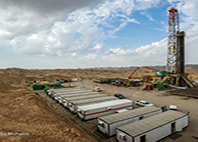
IEA and OPEC Say: World Oil Market Now Well Supplied


The International Energy Agency said in its monthly report that the world’s spare oil production capacity was down to 2% of global demand, with further falls likely, Reuters reported.
“This strain could be with us for some time and it will likely be accompanied by higher prices, however much we regret them and their potential negative impact on the global economy,” the Paris-based organization said.
Members of the Organization of the Petroleum Exporting Countries and other exporters such as Russia agreed in June to raise output as the market appeared increasingly tight.
The price of global benchmark Brent crude has risen from around $45 a barrel in June 2017 and peaked at over $85 this month on bullish bets by speculators.
OPEC, Russia and others such as US shale companies had increased production sharply since May, raising global output by 1.4 million barrels per day.
Overall, OPEC had boosted production by 735,000 bpd since May as Middle East Gulf producers such as Saudi Arabia and the UAE more than compensated for declining output in Venezuela and Iran, which is facing US sanctions from next month.
OPEC also sees the oil market as well supplied and is wary of creating a glut next year, the group’s secretary-general said on Thursday, suggesting producers are in no rush to expand a June agreement that raises output.
“The market has been reacting to perceptions of a possible supply shortage. The market remains well supplied,” OPEC Secretary-General Mohammad Barkindo said.
Supply from Iran during September dropped to a two-and-a-half year low, the IEA said, as customers continued to cut back in the run-up to new sanctions, which start on November 4.
Iranian output fell to 3.45 million bpd, it said, down 180,000 bpd month-on-month. Iranian oil exports in September fell to 1.63 million bpd, down 800,000 bpd from recent 2Q18 peaks, the agency estimated.


Trump weighs using $2 billion in CHIPS Act funding for critical minerals

Codelco cuts 2025 copper forecast after El Teniente mine collapse

Electra converts debt, launches $30M raise to jumpstart stalled cobalt refinery

Barrick’s Reko Diq in line for $410M ADB backing

Abcourt readies Sleeping Giant mill to pour first gold since 2014

Nevada army depot to serve as base for first US strategic minerals stockpile

SQM boosts lithium supply plans as prices flick higher

Viridis unveils 200Mt initial reserve for Brazil rare earth project

Tailings could meet much of US critical mineral demand – study

Kyrgyzstan kicks off underground gold mining at Kumtor

Kyrgyzstan kicks off underground gold mining at Kumtor

KoBold Metals granted lithium exploration rights in Congo

Freeport Indonesia to wrap up Gresik plant repairs by early September

Energy Fuels soars on Vulcan Elements partnership

Northern Dynasty sticks to proposal in battle to lift Pebble mine veto

Giustra-backed mining firm teams up with informal miners in Colombia

Critical Metals signs agreement to supply rare earth to US government-funded facility

China extends rare earth controls to imported material

Galan Lithium proceeds with $13M financing for Argentina project

Kyrgyzstan kicks off underground gold mining at Kumtor

Freeport Indonesia to wrap up Gresik plant repairs by early September

Energy Fuels soars on Vulcan Elements partnership

Northern Dynasty sticks to proposal in battle to lift Pebble mine veto

Giustra-backed mining firm teams up with informal miners in Colombia

Critical Metals signs agreement to supply rare earth to US government-funded facility

China extends rare earth controls to imported material

Galan Lithium proceeds with $13M financing for Argentina project

Silver price touches $39 as market weighs rate cut outlook

















